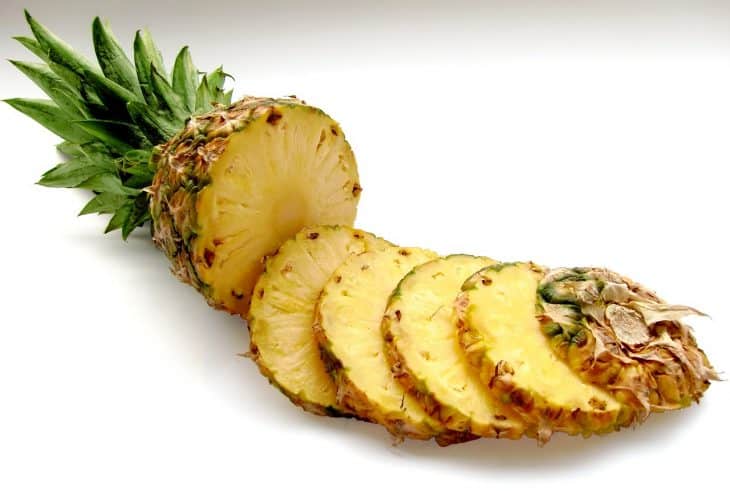
As mighty as its crown might make it seem, the pineapple had its own humble beginnings. That is just some of the pineapple facts that you can divulge into this article. Learn more about its health benefits, its symbolism, and why it costs as much as it does today.
- As a plant, pineapple is a perennial, fragrant kind with a short and chunky stem.
- A pineapple plant can grow up to 3.3 to 4.9 feet high.
- Although pineapples are available all-year-round, they in season from March to July.
- One plant only produces one pineapple each season.
- The biggest producer of pineapples in the world is South Asia.
- The scientific name of pineapple is ‘Ananas comosus.’
- The pineapple plant is a member of the bromeliad family.
- Although it can grow on different terrains, pineapple favors soil that is slightly acidic.
- Pollination among pineapples occurs with the help of bats and birds, especially hummingbirds.
- Pineapple serves as a valuable source of fibers, vitamin C and the vitamin B group.
- The calorie content of pineapples is at 49.95 per 100 grams.
- Pineapple sugar content is at 16 grams per cup.
- By 2016, the countries Costa Rica, Brazil, Philippines, Thailand, and Indonesia are the top producers of pineapple.
- Pineapple also has a role in architecture as decorative elements signifying hospitality.
- Pineapple’s flesh and juice are useful in universal cuisines.
- Vinegar and alcohol production makes use of various parts of a pineapple.
- Even in the wild, pineapple can survive and produce fruit for as long as 50 years.
- The pineapple fruit is a product of 100-200 different flowers fusing into one.
- Pineapple juice has a reputation for alleviating morning sickness.
- The manganese found in pineapple is essential in the development of strong bones and tissues.
Pineapple Facts Infographics
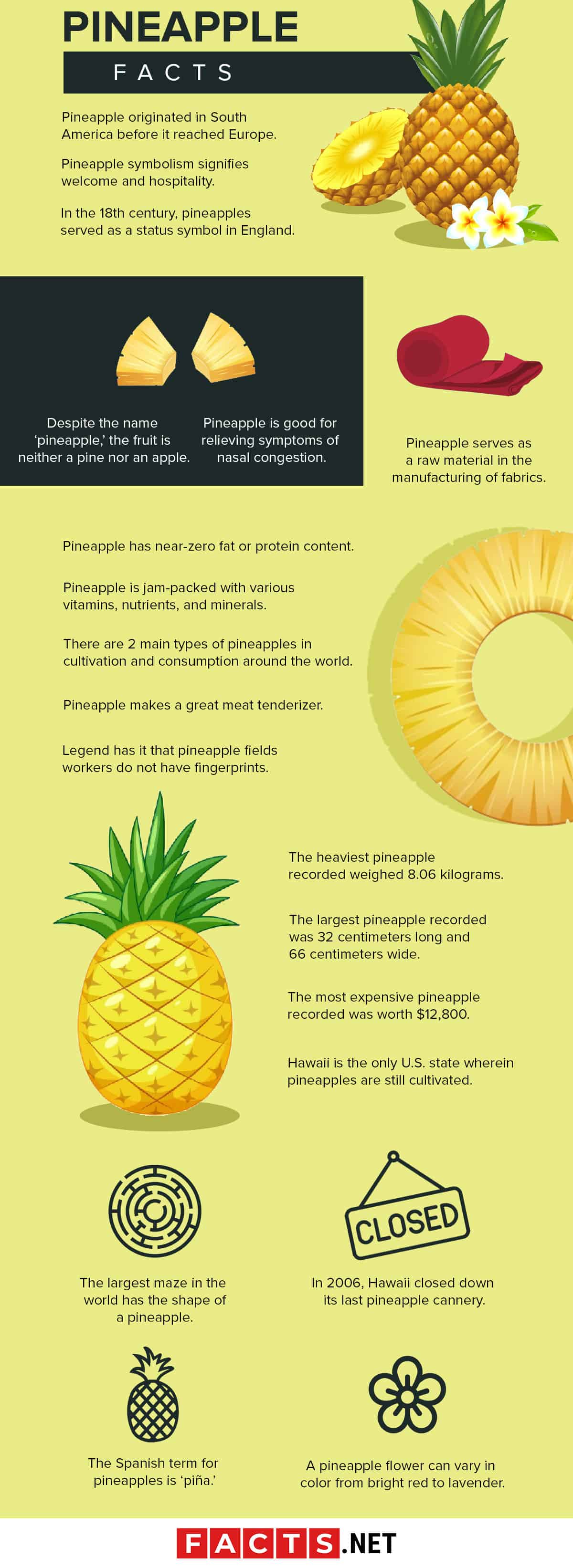
Pineapple originated in South America before it reached Europe.
Christopher Columbus, an Italian colonizer, brought the fruit home from one of his expeditions. The fruit was named ‘pina’ at first due to its pine cone-like appearance.
Later on, an Englishman penned ‘apple’ at its tail to indicate its fruit nature.
Pineapple symbolism signifies welcome and hospitality.
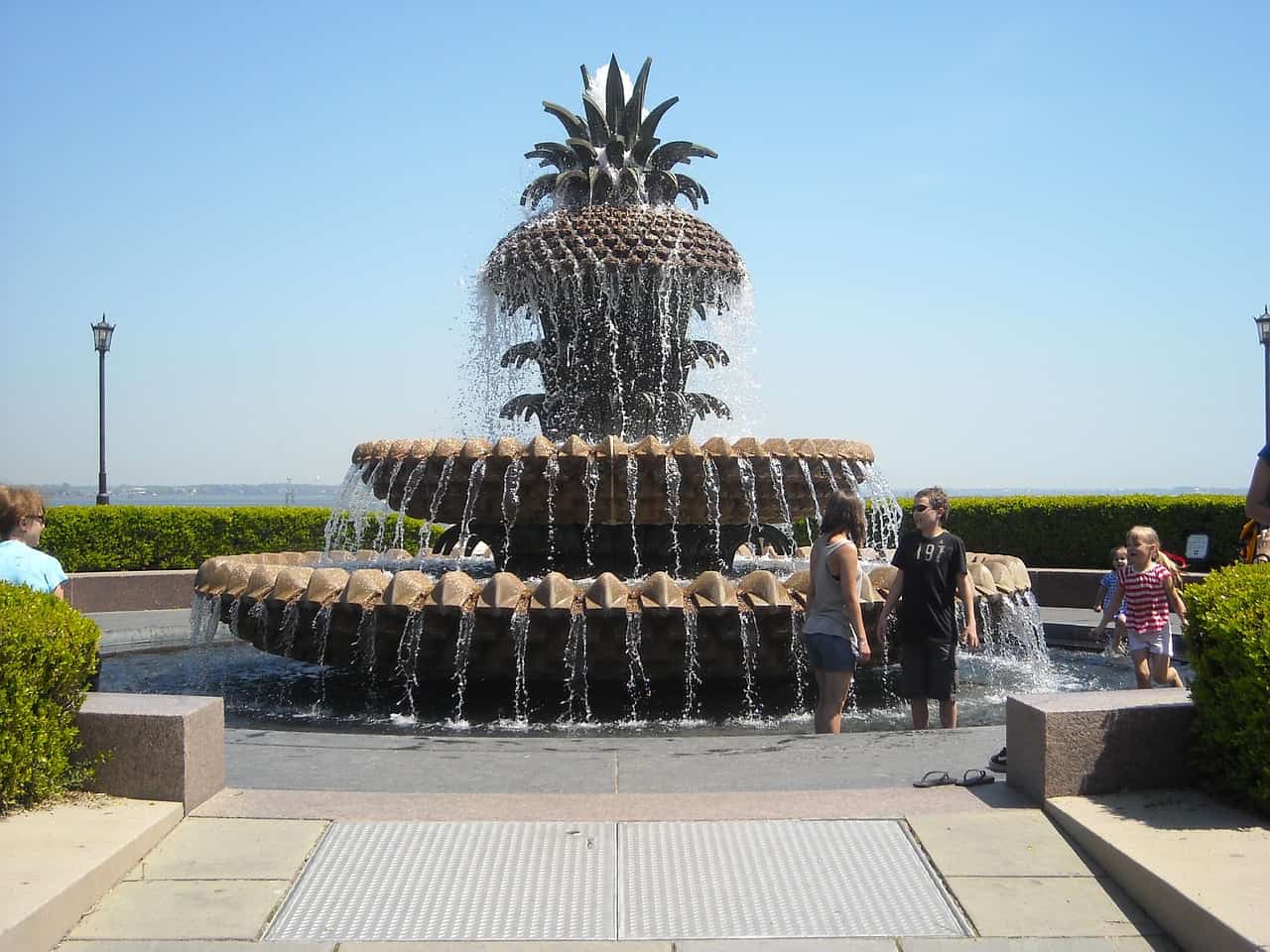
It also means “You are perfect” when presented to someone. Moreover, pineapples used as decoration on gate posts and door frames serve as welcome signals.
In the 18th century, pineapples served as a status symbol in England.
People back then can even rent one for the evening just to use it as an accessory to a party.
Pineapple serves as a raw material in the manufacturing of fabrics.
The strong fibers that build its leaves are harvested and then processed into articles of elite clothing. In Aklan, Philippines, the leaves undergo five stages up to the finished product: the piña fabric.
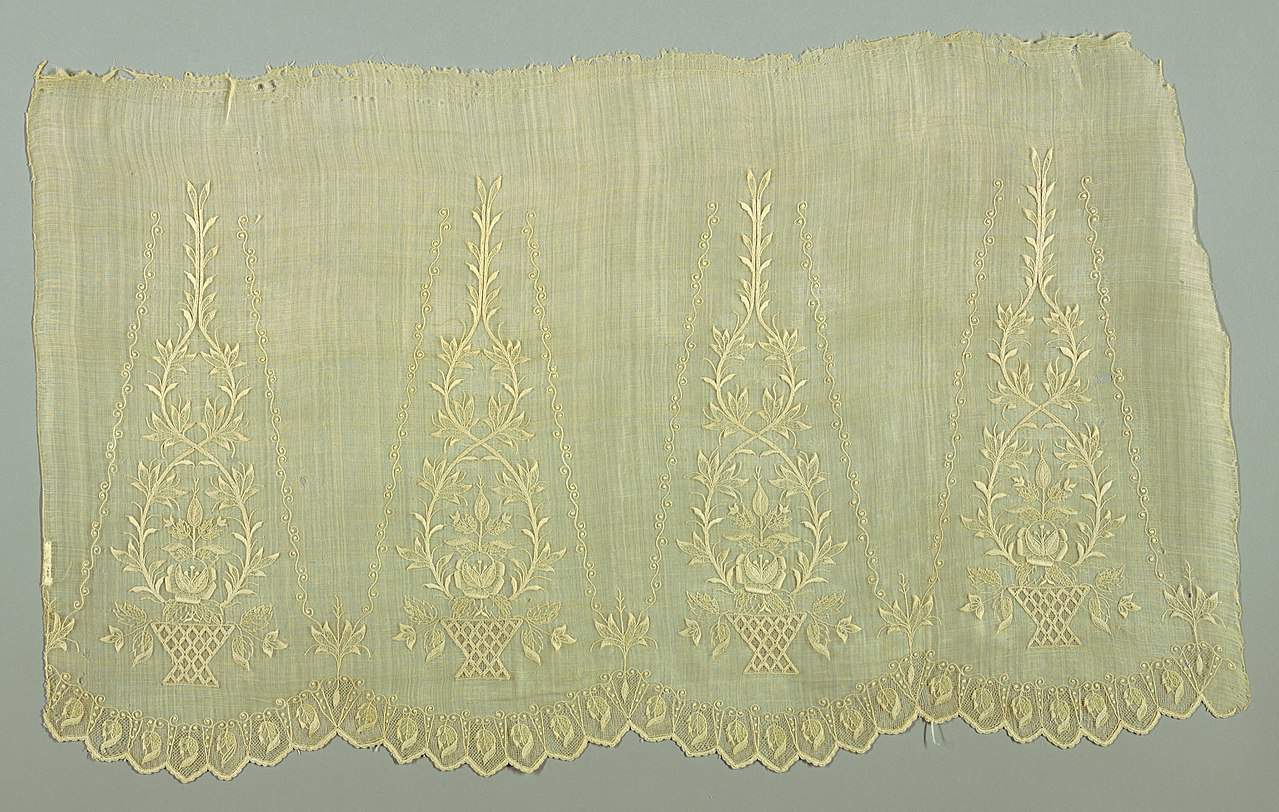
Despite the name ‘pineapple,’ the fruit is neither a pine nor an apple.
It is a berry, or more accurately, a fruit made up of many berries that have developed together. In other words, a pineapple is not a single fruit, rather, it is a group of fused berries.
Pineapple is good for relieving symptoms of nasal congestion.
Alongside this condition are the cough and common cold. Furthermore, pineapple reduces inflammation and prevents blood clots from developing.
Pineapple has near-zero fat or protein content.
Rather, it consists of 13% carbohydrates and 86% water.
Pineapple is jam-packed with various vitamins, nutrients, and minerals.
The list includes beta-carotene, bromelain, calcium, copper, insoluble/soluble fiber, folate, magnesium, manganese, potassium, thiamin, vitamin B6, and vitamin C.
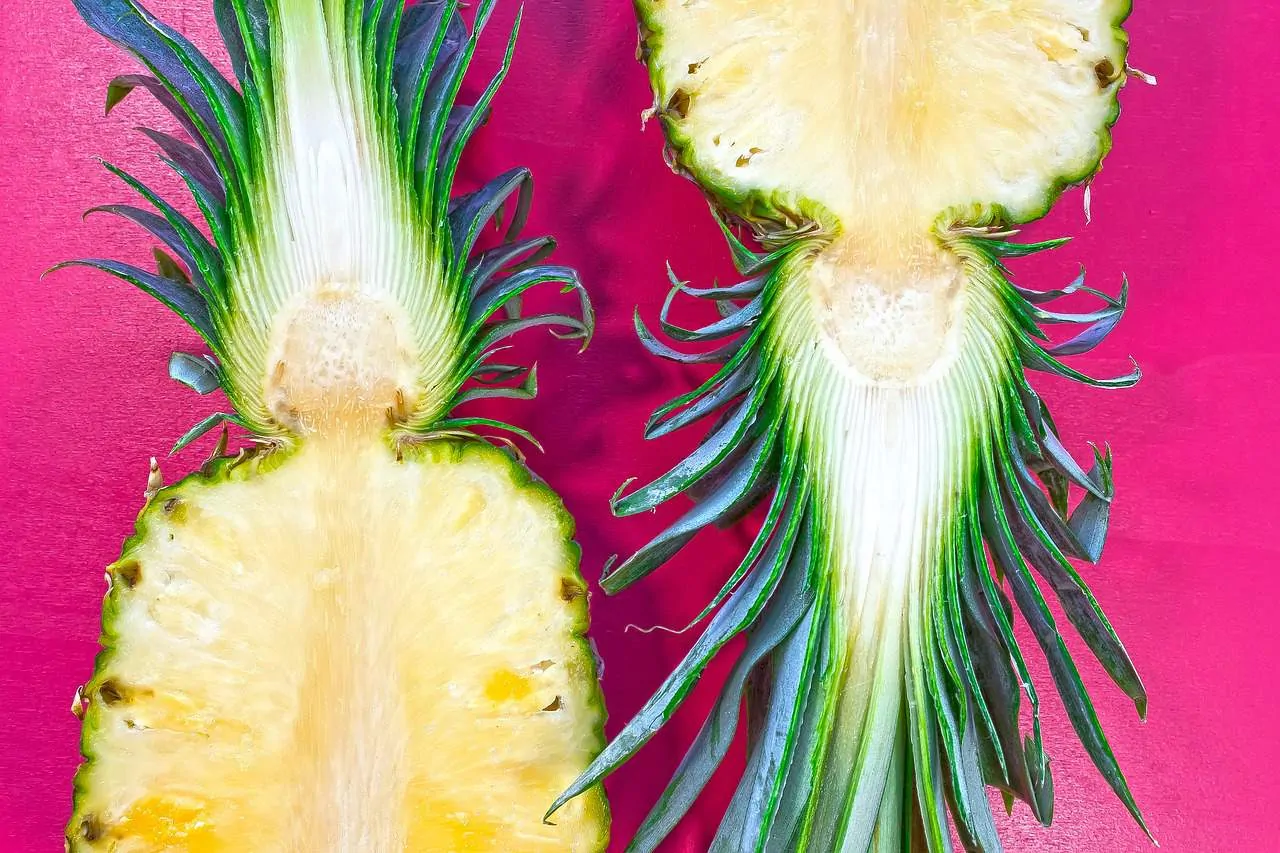
There are 2 main types of pineapples in cultivation and consumption around the world.
One is the ‘cayenne pineapple’ while the other is the ‘red Spanish pineapple.’ Their difference can be determined by the fruit’s color and size.
Pineapple makes a great meat tenderizer.
Its bromelain content has the ability to break down the protein content of the meat.
Legend has it that pineapple fields workers do not have fingerprints.
They believed that the fruit has an enzyme that washes the workers’ fingerprints away. Little do they know, the said enzyme has essential health benefits.
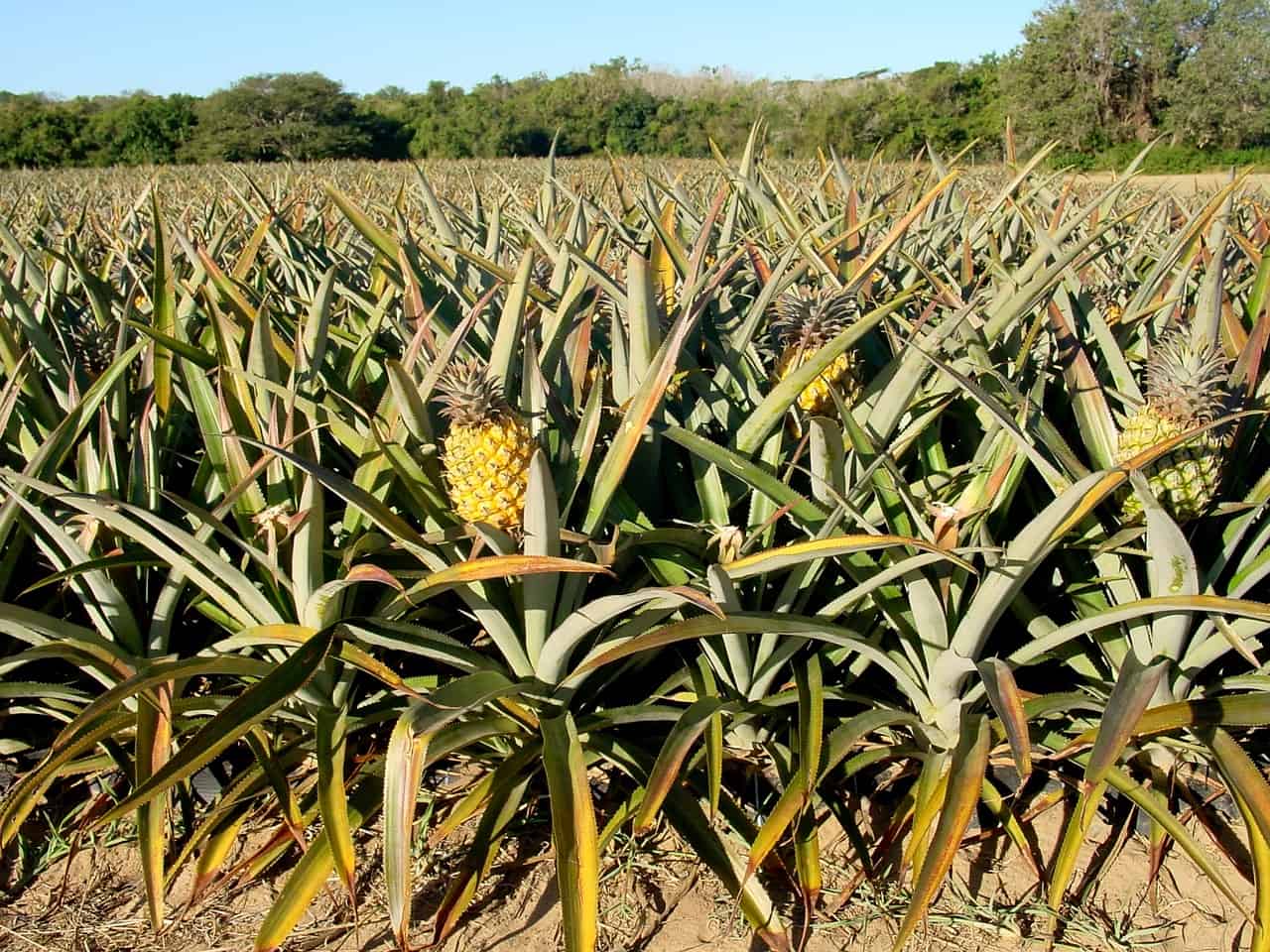
The heaviest pineapple recorded weighed 8.06 kilograms.
E. Kamuk, a man from the Ais Village in West New Britain Province, Papua New Guinea, grew the fruit that earned a Guinness World Record.
The largest pineapple recorded was 32 centimeters long and 66 centimeters wide.
In 2011, Christina McCallum of Bakewell, Australia weighed the gigantic fruit in at 8.28 kilograms.
The most expensive pineapple recorded was worth $12,800.
It was grown in horse manure in Britain. For over two years, the nurture of the fruit in the Lost Gardens, Heligan, Cornwall included traditional, hence, very expensive Victorian gardening techniques.
The first-ever successful cultivation of pineapple in Europe was in 1658.
They believed that Pieter de la Court set the record at Meerburg.
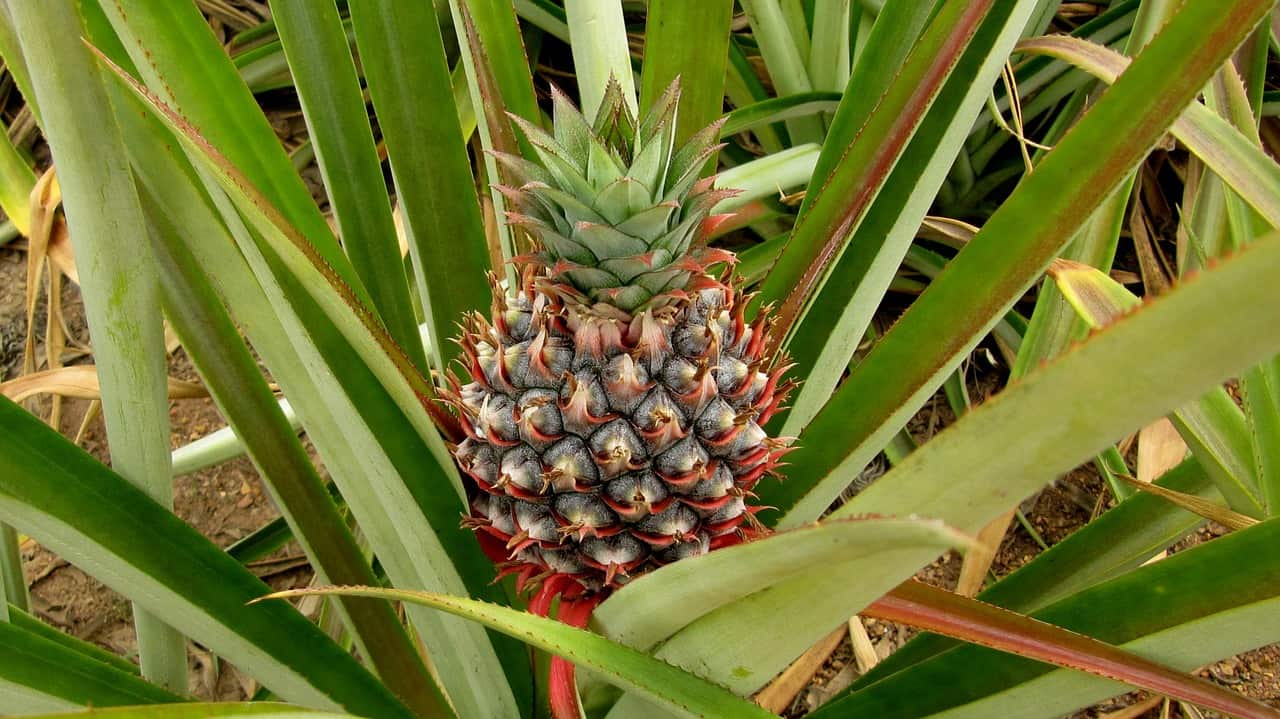
Hawaii is the only U.S. state wherein pineapples are still cultivated.
It is quite a sad pineapple fact, considering that the origin of the fruit is said to be the continent where it is in. The first Hawaiian pineapple cultivation occurred in the 18th century.
The largest maze in the world has the shape of a pineapple.
It is the Dole Plantation’s Pineapple Garden Maze located in Hawaii. In the country, the fruit is called ‘Hala kahiki.’
In 2006, Hawaii closed down its last pineapple cannery.
Since then, the country only exports fresh pineapples.
The Spanish term for pineapples is ‘piña.’
However, it might have been used all over the world in reference to the famous drink called ‘piña colada.’ Pineapple juice is the main ingredient of the said drink.

A pineapple flower can vary in color from bright red to lavender.
These flowers are the ones that produce the berries which fuse together around the core of the pineapple. Hence, the fruit is the finished product of the bunch of ‘fruitlets’ fusing together.
How long a pineapple takes to grow depends on its type.
The ‘tops’ variation takes around 24 months to produce, though it takes even longer in places with colder climates. Meanwhile, ‘suckers’ or ‘pups’ take around 18 months. Another kind called ‘slips’ produces fruit in just within a year.
Smoke can be used to trick pineapples into flowering.
Its discovery was made on the Azores Islands where they used smoking for the process.
Pineapples do not grow from planting seeds.
Instead, they grow out from the top of the planted central stem. When the individual fruiting flowers have fused and produced a single fruit, it will then form a ‘crown’ made of several short leaves.
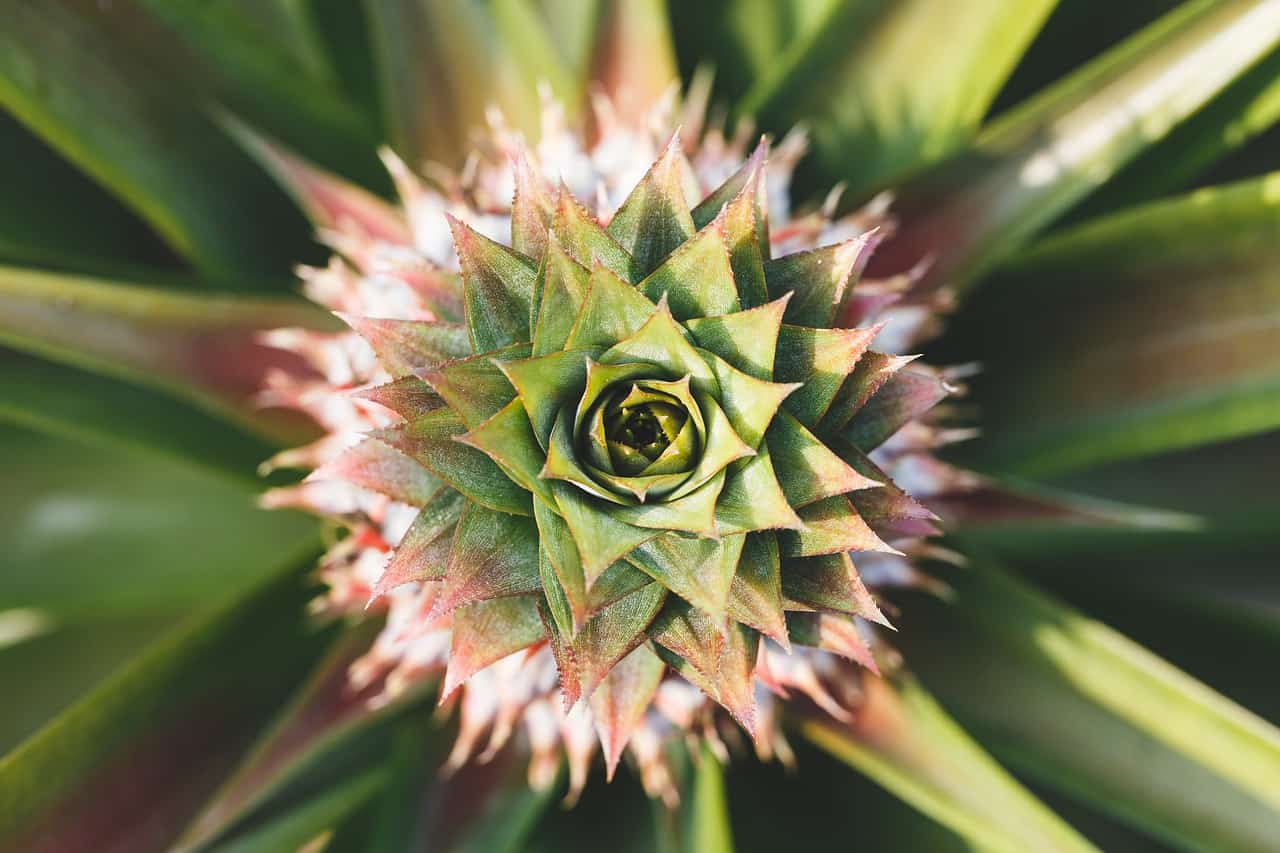
Pineapples do not grow on trees.
Rather, they grow on a plant that is close to the ground which also only bears only one fruit.
In 1658, the Netherlands built the first greenhouse with the goal of monetizing the pineapple market.
This move began what was called the Pineapple Wars in Europe. However, greenhouse-grown pineapples require huge expenses and laborious endeavors. Each fruit would take up to 4 years to bloom, ending up costing USD $8,000.
What makes it more unworthy is that the pineapples are rarely eaten and would only be shown to admired people until they rot.
Pineapple is very perishable when it is fully ripe.
It can only stay for 2 days maximum when kept under normal conditions. When refrigerated, it can last up to a week.
Canned pineapples have higher calorie and sugar content.
In this condition, the fruit also diminishes into fewer minerals and vitamins. The good thing is that there is an option wherein there is no added sugar or the fruit is canned with its juice instead of sugary syrup.
Pineapple flesh and juice is a famous staple among many cuisines from around the world.
It can either be cooked or eaten raw, in the form of chunks or slices and even canned in its juices. A common use for the fruit is an ingredient for fruit salads and a partner for dairy desserts like yogurt and ice cream.
Otherwise, they are cooked with Asian stir-fries like sweet-and-sour pork or served as pizza toppings like that in Hawaiian-flavored ones.

Pick a good pineapple by choosing the yellowish or orangey ones.
Such fruits have higher possibilities of ripening eventually. A good pineapple should be solid yet supple. On the contrary, you should avoid the fruits that are very hard and green in color just as how you should avoid dark brown ones with rot-like skin stains.
Pineapples do not ripe on their own after being picked.
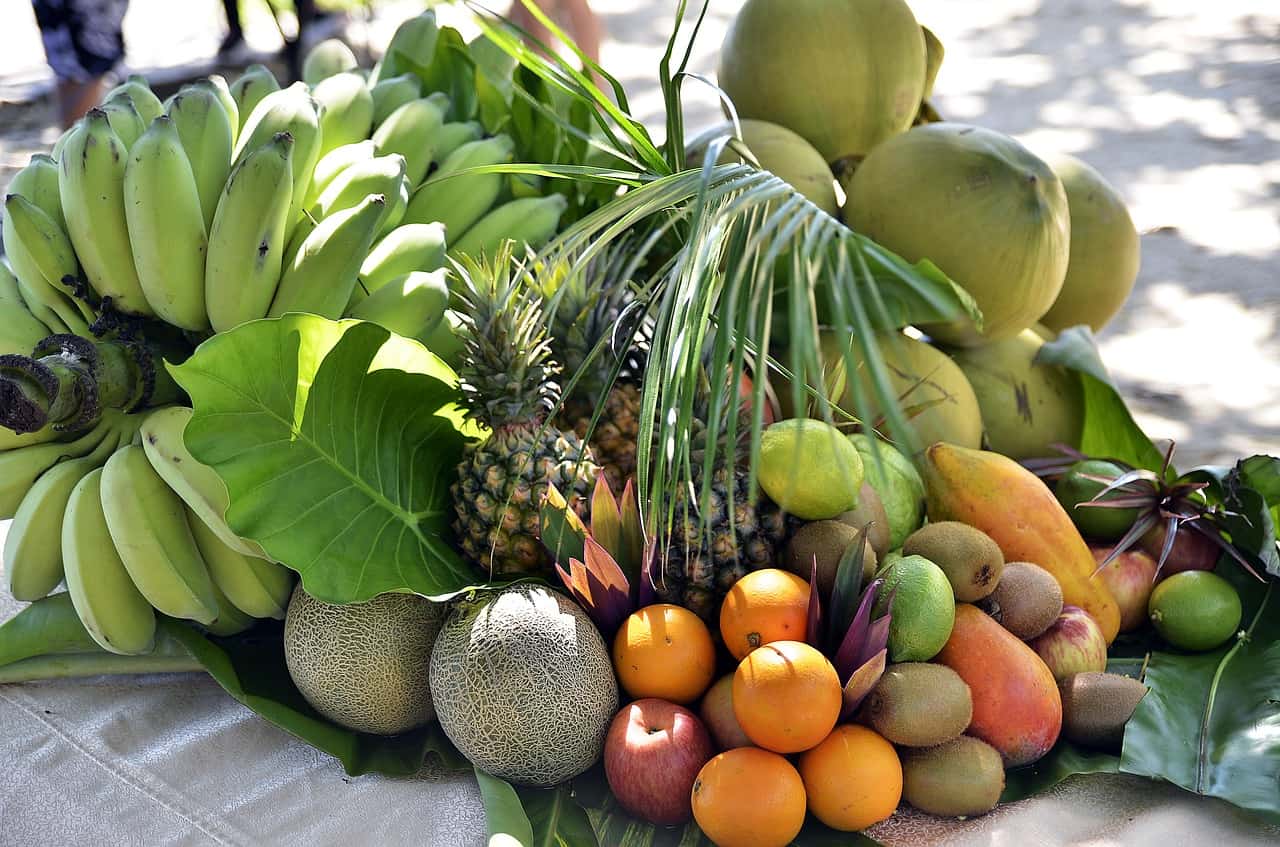
This characteristic sets the fruit apart from apples, pears, bananas, and figs. Still, a pineapple can ripen by storing it with easy-ripening fruits like apples, tomatoes, and bananas. Fruits like them eject ethylene, a plant hormone that aids in the ripening process.
Another method is by placing the pineapple upside-down; on a balance on its leaves with its base facing upwards. The position would support the sugar’s flow and eventually yield an evenly-ripened fruit, saving the pineapple from rotting.
Was this page helpful?
Our commitment to delivering trustworthy and engaging content is at the heart of what we do. Each fact on our site is contributed by real users like you, bringing a wealth of diverse insights and information. To ensure the highest standards of accuracy and reliability, our dedicated editors meticulously review each submission. This process guarantees that the facts we share are not only fascinating but also credible. Trust in our commitment to quality and authenticity as you explore and learn with us.
